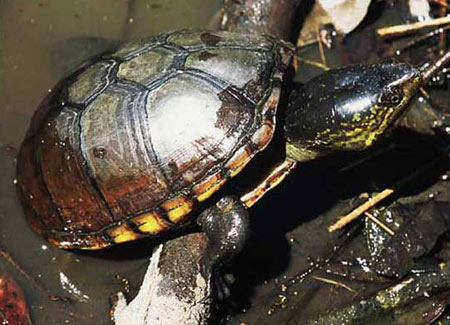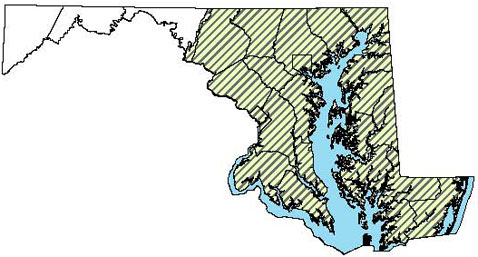Field Guide to Maryland's Turtles (Order Testudines)
Main_Content
Eastern Mud Turtle (Kinosternon subrubrum) | | Common Name: |

Photo of Eastern Mud Turtle courtesy of Mark Tegges
|
Size: 2¾ - 4 inches. Record - 4⅞ inches |
Appearance:Comparatively larger plastron (bottom shell) than the musk turtle, its cousin in Family Kinosternidae; has two conspicuous hinges, fore and aft, plus back lobe of plastron is narrower than front lobe. The pectoral scutes are triangular. The carapace (top shell) is clean, oval, smooth and brown to yellowish. It has straight sides and drops abruptly at the back.
|
Habitats:Prefers slow-moving shallow water with soft bottoms and thick emergent and aquatic vegetation, such as ditches, wet meadows, small ponds, marshes, cypress swamps and Delmarva Bays. This species is very tolerant of brackish water, so may be locally abundant along tidal marsh edges, upland marsh hummocks and offshore islands.

Photo of Habitat for
Eastern Mud Turtle courtesy of Tony Prochaska
|
How to Find:Search along wetland edges and shallow water areas, but may also wander from water, particularly during egg-laying in May and June, when high dry sandy ridges are frequented.
|
Distribution in Maryland:Primarily found on the Coastal Plain but has been found on the Piedmont as far west as Washington County.

|
|
